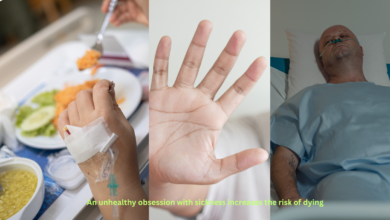The CDC will be relaxing Covid isolation guidelines, and here’s why it’s beneficial.

The Centers for Disease Control and Prevention (CDC) is reportedly preparing to release updated guidelines in April that will significantly reduce recommendations for individuals infected with Covid-19. The revised guidelines are expected to no longer suggest that most Americans with the virus need to stay home from work and school for five days. Instead, they will advise that individuals can return to normal activities if they have been fever-free for at least 24 hours (without fever-reducing medication) and have mild, improving symptoms. However, there was no mention of whether the new guidelines would address the use of tests in decision-making.
In the opinion of Aaron Glatt, an infectious disease doctor and hospital epidemiologist at Mount Sinai South Nassau Hospital on Long Island, making a practical decision is essential. When it comes to public health, it is crucial to take into account what will be followed and what is achievable.
While following guidelines that maintain the highest infection control standards may satisfy public health purists who are not responsible for creating real-world policies, guidelines that recognize the challenges of limited sick leave and emergency childcare for workers, as well as the value of social interactions, are more likely to not only be followed but also to build trust in public health authorities.
The new recommendations are not expected to heighten the risk of exposure to severe Covid-19 for individuals who are most vulnerable.
The focus of the new guidelines will be on the wider community, including individuals who reside, work, and attend school in that community. This does not extend to hospitals, nursing homes, and similar facilities, where residents are less mobile and more susceptible to the severe effects of the virus. Consequently, those at higher risk of severe illness or death from infection, such as older or sicker individuals, are likely to be subject to more cautious and distinct guidelines. Dr. Glatt underscores the importance of tailored approaches, recognizing that strategies for a 4-year-old differ from those for a nursing home, and rightly so.
According to the CDC, Covid-19 hospitalization rates for adults aged 65 and over are a minimum of four times higher than in other age groups. The rates are especially elevated for adults aged 75 and over. A study published in October revealed that individuals 65 and older accounted for nearly 90 percent of Covid-19 deaths in hospitals.
According to Shira Doron, an infectious disease doctor and hospital epidemiologist at Tufts Medicine in Boston, the older adults currently being hospitalized and succumbing to Covid-19 are not the previously healthy individuals with active lifestyles who were becoming severely ill earlier in the pandemic. They are individuals with significant underlying health conditions and weakened immune systems. For many of them, it’s uncertain whether Covid-19 is the primary cause of their decline. Doron notes that the Covid-19 inpatient and death populations she is seeing now are markedly different from those of 2020 or even 2021.
It is difficult to determine the precise number of severely impacted adults who are infected in facilities such as hospitals and nursing homes. Similarly, it is challenging to gauge how many older adults, cognizant of their heightened risk, are taking additional precautions in public, such as wearing masks and congregating outdoors.
It’s important to consider the experiences of states that have already eased their guidelines. For instance, since Oregon updated its guidelines in May 2023, the state has not experienced unusual increases in transmission or severity. Similarly, California made similar changes in January 2024. State officials revised their recommendations in the hope of reducing the burdens on workers without sick leave and minimizing disruptions in schools and workplaces, according to the Post’s reporting.
According to Doron, the reason why loosened isolation guidelines have not led to chaos in Oregon or in Europe, where the recommendations changed two years ago, is because isolation was not very effective in reducing transmission to begin with. “This has nothing to do with the science of contagiousness and the duration of contagiousness. It has to do with the fact that it wasn’t working anyway,” she explains.
Doron suggests that moving away from ineffective measures to reduce the virus’s impact and towards those that do work is a smarter way forward.
Updating testing protocols would allocate resources to effective interventions
Isolation measures have not proven effective in reducing the impact of Covid-19, as a significant number of individuals choose to disregard them regardless of their health status. Some may also refrain from disclosing symptoms to evade compliance with isolation requirements.
A workplace or school policy that follows the current CDC guidelines recommends that individuals who test positive for Covid-19 infection stay home for at least five days. This policy inadvertently creates a disincentive for some individuals with symptoms to avoid getting tested, as they may be reluctant to miss school, work, or social events. Due to the lack of paid sick leave for many people, admitting even mild symptoms can result in significant financial losses when it entails missing a week of work.
Simultaneously, as these guidelines incorporate testing into their protocols, they prompt numerous individuals and the federal government to invest in at-home tests, despite their early inaccuracy in detecting infections. This allocation of resources could be redirected to providing tests to those most likely to benefit from Paxlovid, potentially saving more lives, according to Doron.
Over time, CDC guidelines should promote the practice of being considerate
The CDC’s updated guidelines are not expected to be formally released until at least April, and their specific details remain unclear. Although they are recommendations, rather than mandates, employers and state and local health departments frequently use them to shape their own policies. One significant impact of a new set of guidelines could be the normalization and prioritization of wearing masks, according to Jay Varma, an epidemiologist and biotechnology executive with extensive experience in state and federal public health practice. He is optimistic that the new recommendations will strongly advocate for the routine use of masks in public by individuals who leave their homes as soon as they are feeling well.
Varma suggested in an email to Vox that the CDC should view the promotion of cultural acceptance of wearing masks in public as a long-term endeavor. This approach would be similar to promoting behaviors such as handwashing, wearing a condom, and smoking outdoors as acts of courtesy and consideration for others. In the long run, changing social norms around masking is more achievable than expecting people to forgo their social lives for extended periods.
It would also be beneficial for public health officials to advise individuals to consider who they may expose if they end their isolation shortly after a Covid diagnosis, as suggested by Glatt. Creating nuanced recommendations for everyone is challenging, but the guidelines could propose that those who have frequent interaction with individuals taking high-dose immunosuppressive medications should behave differently compared to those who do not have such contacts.





